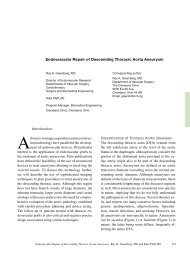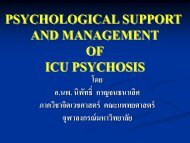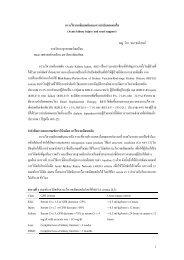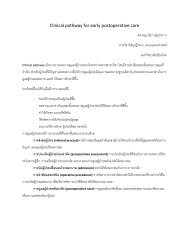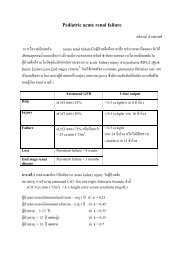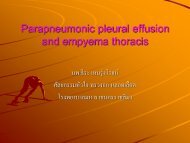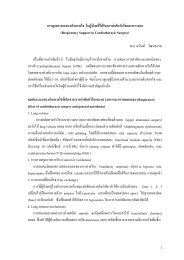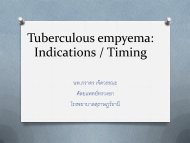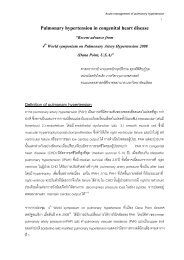Role of PET Role of PET-CT in Pulmonary Malignancy
Role of PET Role of PET-CT in Pulmonary Malignancy
Role of PET Role of PET-CT in Pulmonary Malignancy
You also want an ePaper? Increase the reach of your titles
YUMPU automatically turns print PDFs into web optimized ePapers that Google loves.
Age: Risk <strong>of</strong> malignancy <strong>in</strong>creases with age.– Risk <strong>of</strong> 3% at age 35-3939 years– Risk <strong>of</strong> 15% at age 40-4949 years– Risk <strong>of</strong> 43% at age 50-5959 years– Risk <strong>of</strong> greater than 50% <strong>in</strong> persons older than 60 yearsSmok<strong>in</strong>g history: A history <strong>of</strong> smok<strong>in</strong>g <strong>in</strong>creases the chances <strong>of</strong> the SPN be<strong>in</strong>g malignant.Prior history <strong>of</strong> cancer: People with a history <strong>of</strong> cancer <strong>in</strong> other areas <strong>of</strong> the body have a greater chancethat the SPN is malignant.Occupational risk factors for lung cancer: Exposure to asbestos, radon, nickel, chromium, v<strong>in</strong>yl chloride,and polycyclic hydrocarbons <strong>in</strong>creases the chance that the SPN is malignant.Travel history: People who have traveled to areas with endemic mycosis (eg, histoplasmosis,coccidioidomycosis, blastomycosis) or a high prevalence <strong>of</strong> tuberculosis have a higher chance <strong>of</strong> the SPNbe<strong>in</strong>g benign.People who have a history <strong>of</strong> tuberculosis or pulmonary mycosis have a greater chance <strong>of</strong> the SPN be<strong>in</strong>gbenign.




